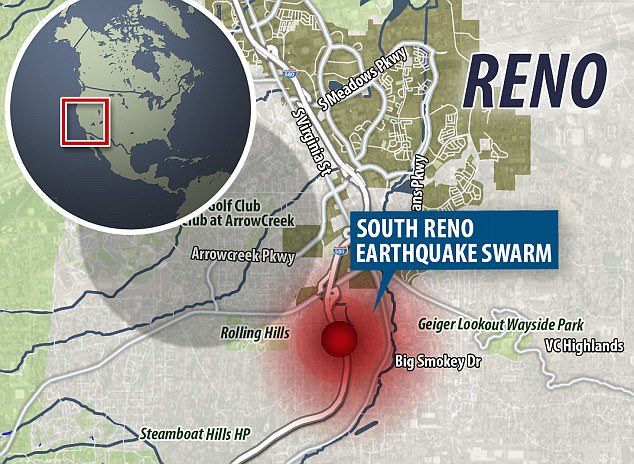South Reno has been shaking, ever so gently, for six days now.If you live there - near Galena High School or where the Mount Rose Highway goes below the I-580 - you likely haven't felt much, if anything. But earthquake detecting instruments in the area have picked up more than 230 small temblors since late last Thursday.
The largest in the swarm so far, which hit Tuesday afternoon, measured a 2.7 on the Richter scale - a magnitude that University of Nevada, Reno seismologist Ken Smith described as "pretty small."
"You'd have to be right above it to really feel anything," he said, noting they've gotten a few dozen reports from people who've felt the jolts.
While earthquakes in Northern Nevada are commonplace (The Silver State is the third-most seismically active state in the nation), Smith said he and his colleagues at UNR's Nevada Seismological Laboratory pay special attention to earthquake swarms.
Swarms of small earthquakes can sometimes act as pseudo warning systems for larger events to come.Smith said there's no telling if this swarm will die off or yield something larger.
"But if they do, we want to be on top of it," he said. "In a way it's kind of a heads up."
Two of Reno's more recent seismic events, a 2013 magnitude 4.4 temblor in Spanish Springs and the 2008 magnitude 4.7 in Mogul/Somersett were both preceded by hundreds of small earthquakes.This swarm is tightly clustered underneath a patch of land situated between the I-580 and Old U.S. 395, about 1.4 miles from Galena High School.
Social media commenters, reacting to stories initially reporting the swarm last week, pointed out that the swarm is located in the same area as the Ormat Steamboat Geothermal Power Plant.
The activities of geothermal plants, which tap into hot water pockets beneath the Earth's crust to create electricity, have been linked to seismic events in the past.
But Smith said there's no evidence the swarm is associated with the plant.
The 200-plus earthquakes in this swarm are occurring six to seven kilometers below the ground, far deeper than the Ormat plant's activities.
It's unclear as to what exact fault system is producing this swarm, but Smith said the South Reno region - especially near the mountain range - frequently gets a little shaky.
Faults in the area produced sizable quakes as recently as 2015. That seismic event, known as the "Thomas Creek Sequence," produced a series of magnitude 3.0's that culminated with a magnitude 4.0.
Smith said people living in Northern Nevada need to be prepared for the smaller, more commonplace, earthquakes just as much as they'd be prepared for the "big one.""Everyone is worried about the big one, but it doesn't take the big one to knock over your water heater and empty out your shelves," he said.
Smith said strapping down your water heater and securing bookcases to walls are simple things you can do to prepare.
Though the largest temblor hit Tuesday afternoon, it appears the South Reno swarm is slowing down. You can keep an eye on the ground's movements on the earthquake lab's
website or sign up for their
email alerts.

Comment: In recent months we have seen other areas of the US experiencing these swarms of mini-earthquakes as well: